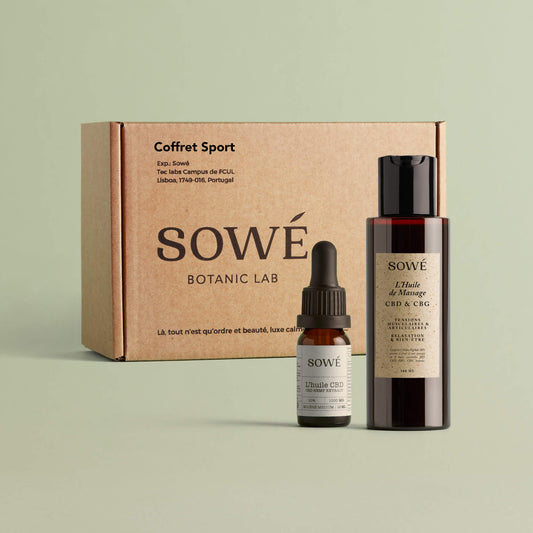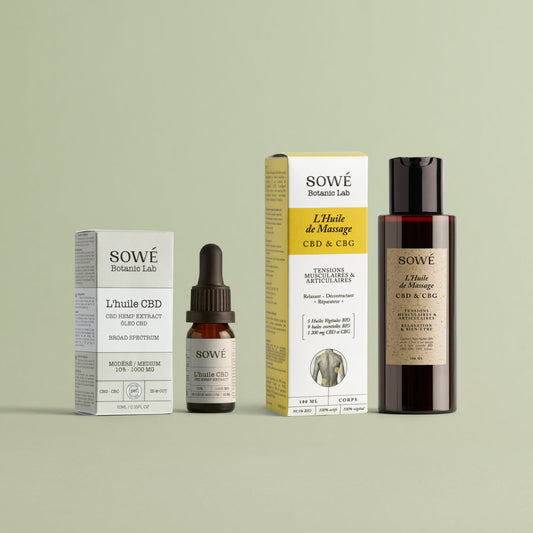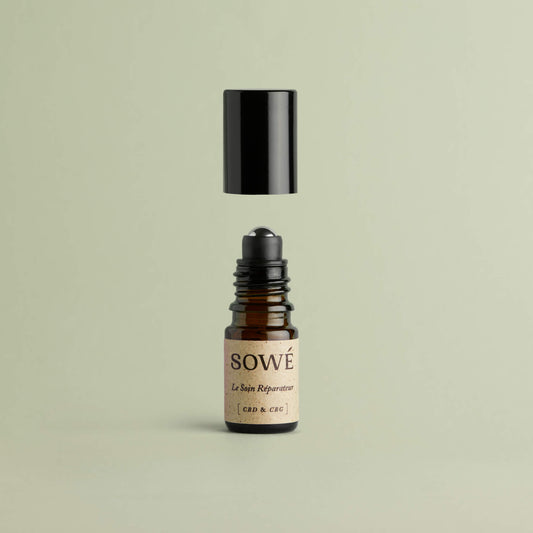
Broad spectrum CBD oil
Broad spectrum CBD is a hemp extract containing all of the plant's substances with the exception of THC. Active used as a cosmetic or food ingredient
Cannabidiol or CBD, a major constituent of hemp
Cannabidiol or CBD is an active substance extracted from hemp, a plant authorized for exploitation which belongs to the large family of Cannabinaceae and the cannabis genus, which is often confused with other names such as "cannabis light", "cannabis legal”, or “well-being cannabis”.
This substance is naturally present in the cannabis or hemp plant. CBD is one of its many active compounds. These compounds can be found in all parts of the plant, but the interesting parts for extracting cannabidiol are essentially the female inflorescences and their trichomes.
CBD: a lipophilic compound
Lipophilic means insoluble in water, but soluble in fats, which explains why products intended for oral or sublingual use are generally vegetable oils used as an excipient to which plant extracts rich in cannabidiol are added. Hemp contains more than a hundred cannabinoids, such as THC (at very low concentration), CBG or even CBN and many terpenes and flavonoids. It is therefore, with the exception of purified forms, a product with a complex composition, but rich in cannabidiol and poor in THC (terahydrocannabinol).
Although hemp is a plant that has been used for millennia, it was not until 1940 that a chemist, Dr. Roger Adams, isolated the first cannabinoid, CBD. It was his research that made it possible to identify another well-known cannabinoid, THC. For information, CBD is the second most studied cannabinoid after THC. However, CBD does not provide any psychotropic effects, unlike THC.
Although naturally occurring CBD is currently the most widely used in the so-called “wellness” cannabis and medical cannabis industry, there are other sources of cannabidiol being developed to produce CBD. pure.
Biosynthetic CBD. This form of cannabidiol comes from the genetic transformation of yeast to transform the sugar (galactose) into tetrahydrocannabidiol (THC) and cannabidiol (CBD).
Hemisphere-synthetic CBD: A succession of chemical reactions on a terpene with the aim of converting it into a different substance (menthadienol) and then being associated with another molecule (olivetol).
Synthetic cannabidiol, resulting from the flow chemical synthesis method, thus limiting the formation of THC.
Manufacturing of broad spectrum CBD oil
SOWÉ CBD from supercritical CO2 extraction
The broad spectrum extract that we use is obtained by supercritical CO2 extraction, a safe and eco-responsible method at low temperatures. It is extracted from Sativa L. plants (seeds certified in the European Union catalog), and guaranteed without GMOs, heavy metals, pesticides, unknown components or other residues. It also has perfect traceability. CBD is called “broad spectrum” because it also includes all the cannabinoids, terpenes and other phytochemicals of cannabis, excluding THC. Among the cannabinoids, we find cannabigerol (CBG). In fact, our broad spectrum CBD extract contains approximately 85% CBD, 9% CBG and 1% CBC.
Why is the low temperature process so important?
During CBD extraction and purification, high temperatures affect the quality of the CBD extract. Many beneficial components are then destroyed and chemical reactions create new unwanted molecules that could have an uncontrolled effect on the human body. Low temperature, below 72°C, is the only way to preserve all the virtues of the plant without denaturing its components. The cannabinoids associated with flavonoids, terpenes, Omega 3, 6 and 9, in our extract ensure exceptional natural effectiveness while preserving a real entourage effect.
Properties of broad spectrum CBD oil
The broad spectrum of CBD
Several types of compounds are found in broad-spectrum cannabidiol extract: cannabinoids, terpenes, flavonoids.
Cannabinoids
Beyond the two predominant phytocannabinoids, THC and CBD, there are other identified substances for which knowledge is a little more limited:
- CBC or cannabichromene: non-psychoactive substance which would bind to different receptors of the endocannabinoid system, involved in the transmission of painful messages, thus participating in the principle of the entourage effect when associated with CBD and THC. CBC is also being researched for effects on cancer cells and in inflammation.
- CBN or cannabinol: Cannabinol is a substance resulting from the degradation of THC in its original form, used as a marker for studying the conservation of cannabis products or dried flowers. Its interest could be in inflammation. Research focuses on appetite and bone growth.
- CBL or cannabicyclol
- CBV or cannabivarol
- THCV or tetrahydrocannabivarin: this compound could be of interest in the treatment of obesity, non-insulin-dependent diabetes (type II), post-traumatic stress or Parkinson's disease. It is a minor phytocannabinoid not systematically present in all cannabis varieties.
- CBDV or annabidivarin
- CBCV or cannabichromevarin
- CBGV or cannabigerovarin
- CBG or cannabigerol: plays a role as a precursor which is transformed into other phytocannabinoids during photosynthesis of the plant. This substance would not be psychoactive, that is to say it would not modify mental activity, sensations or behaviors as THC and CBD can do. CBG could potentially have neuroprotective, antimicrobial and stimulating effects of the immune system
Other substances bind to these cannabinoids in the plant and could participate in the therapeutic effects. These are terpenes and flavonoids.
Terpenes
Terpenes are also components of the so-called “broad spectrum” CBD extract. These are the aromatic compounds of the plant, which contribute to its protection against predators and infectious agents.
Certain terpenes have shown their effect, to be confirmed in humans, on endogenous substances, therefore manufactured by the human body, involved in neurotransmission such as serotonin (involved in pain and emotions), GABA or norepinephrine. It should be noted that numerous studies are underway, but most of the therapeutic effects associated with these substances have not been demonstrated.
These molecules have potential therapeutic properties. They are found, just like phytocannabinoids, in the trichomes of the flower, but also in the leaves. Each plant variety contains its own genetic map where a certain number of specific terpenes may appear on the list:
- Myrcene is the majority in cannabis: it could have analgesic, anti-inflammatory, antibacterial and antifungal, antioxidant and neuroprotective properties. It could induce sedative and relaxing effects.
- Limonene, the 2nd most common terpene, acts as an antioxidant, anxiolytic, antibacterial, antifungal and antidepressant substance.
- The pine forest is the terpene most present in nature, it would have anti-inflammatory, bronchial dilator, expectorant, antibiotic, analgesic and anticonvulsant potential. Carophyllene also has anti-inflammatory, anxiolytic, antidepressant, antibacterial and analgesic potential. It would be the only terpene to bind, although weakly, to the cannabinoid CB2 receptor, present in the human body.
Flavonoids
Flavonoids are the molecules responsible for the color and aroma of a plant. Flavonoids also participate in pollination and protect the plant. They have shown, in vivo, anti-inflammatory and antioxidant properties, and even effects on the development of cancer cells. They are mainly found with terpenes and phytocannabinoids in flowers and leaves. The main flavonoids found in cannabis are cannflavin A, B and C, vitellin and isovitexin, apigenin, quecetin, lutein, orientons and kaempferol.
The total or entourage effect
All of the active and useful molecules of the plant constitute the total. However, none of these molecules taken separately is generally capable of reproducing the same effects as the original plant.
This is the principle of the entourage effect where the whole, that is to say the whole plant or part of a plant used, is greater than the sum of each of its components. In other words, in herbal medicine, 1 + 1 = 3.
Properties of broad spectrum CBD oil
The benefits of CBD on the skin
Just like CBD isolate and According to the European Commission, via their cosmetic ingredient database the CosIng, CBD lists no less than 4 convincing effects:
- Anti-seborrhea: Helps control sebum production
- Moisturizer: Maintains the skin in good condition
- Protective: Helps avoid the harmful effects of external factors on the skin
- Antioxidant:Inhibits reactions favored by oxygen, thus preventing oxidation and rancidity
However, the effects of CBD on the skin are not limited to simple sebum regulation. Numerous studies have demonstrated other benefits, CBD is said to be soothing, healing, anti-acne, antibacterial, anti-inflammatory, anti-aging.
The benefits of CBD on our body
To understand the complexity of cannabidiol (CBD) and its broad spectrum, you must know that the human body has the capacity to manufacture and degrade substances comparable to the cannabinoid substances previously described and contained in cannabis or hemp flowers, called " phytocannabinoids" because of natural origin.
It is a regulatory system in mammals that participates in many essential functions such as sleep or appetite. If the immune system and the nervous system are the best known, the endocannabinoid system, also called SEC, was discovered 30 years ago.
It plays a crucial role in regulating many physiological functions of the body by helping it find or maintain balance.
The four main objectives of the SEC include:
- neuro-protection
- recovery after stress
- immune balance
- homeostatic regulation which allows a living being to maintain physiological balance inside its body despite contrary external conditions.
In situations of excessive stress, for example, this system is activated and allows the body to return to a normal state. If necessary, we therefore produce our own cannabinoids: endocannabinoids.
To understand everything on video, you canconsult the capsules produced by an expert and addictologist, René Maarek here.
Broad spectrum cbd oil INCI name and functions
Cannabis sativa seed oil
-
- Emollient - Softens and smoothes the skin
-
- Skin conditioning - Maintains skin in good condition
-
- Antioxidant - Inhibits reactions favored by oxygen, thus avoiding oxidation and rancidity
-
- Antiseborrhoeic - Helps regulate sebum production
-
- Skin protecting - Helps to avoid the harmful effects of external factors on the skin. Protects the skin barrier
-
- Moisturising - Increases the water content of the skin and helps keep it smooth and smooth
-
- Hair conditioning - Leaves hair easy to comb, soft, soft and shiny and / or confers volume, lightness and shine
-
- Soothing - Helps to reduce the skin or scalp discomfort
SOWÉ Botanic Lab uses broad-spectrum CBD certified BPF - Good Manufacturing Practices cosmetic products by the ANSM - (National Agency for the Safety of Medicines and Health Products) and ISO-9001
List of our products containing broad spectrum CBD oil
-
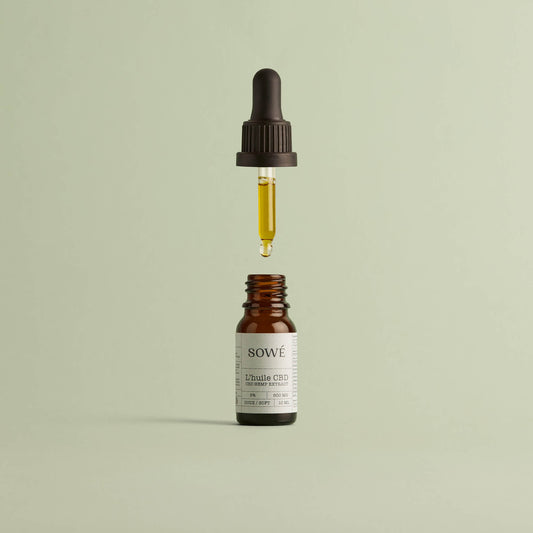
 Special offer
Special offerCBD oil - Organic - Broad Spectrum - Soft 5%
Regular price €22,50Regular priceUnit price / per€29,95Sale price €22,50Special offer -

 Special offer
Special offerCBD oil - Organic - Broad Spectrum - Extra-Strong 30%
Regular price From €69,95Regular priceUnit price / per€94,95Sale price From €69,95Special offer -

 Special offer
Special offerCBD oil - Organic - Broad Spectrum - Strong 20%
Regular price From €55,95Regular priceUnit price / per€74,95Sale price From €55,95Special offer -
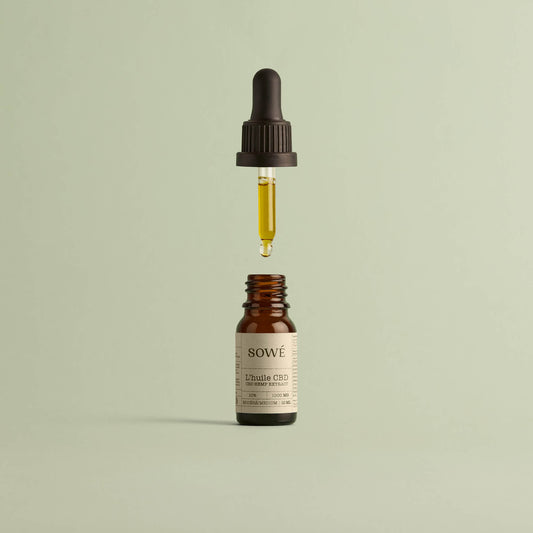
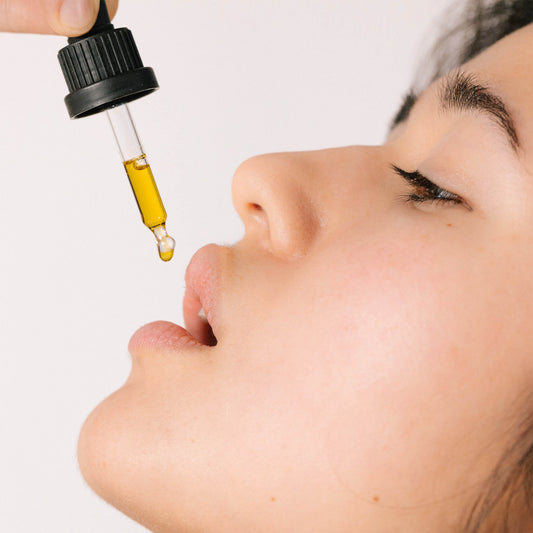 Special offer
Special offerCBD oil - Organic - Broad Spectrum - Medium 10%
Regular price €32,95Regular priceUnit price / per€44,95Sale price €32,95Special offer -

 Special offer
Special offerCBD oil - Organic - Broad Spectrum - Medium 15%
Regular price €44,95Regular priceUnit price / per€59,95Sale price €44,95Special offer -

 Special offer
Special offerRelaxation Kit
Regular price €79,95Regular priceUnit price / per€98,45Sale price €79,95Special offer -

 Special offer
Special offerStop Acne Kit
Regular price €52,95Regular priceUnit price / per€64,85Sale price €52,95Special offer -
Organic CBD massage oil
Regular price From €24,90Regular priceUnit price / per -
Roll-on CBD & CBG - Repairing treatment anti-imperfection
Regular price €14,90Regular priceUnit price / per€19,90Sale price €14,90Special offer














